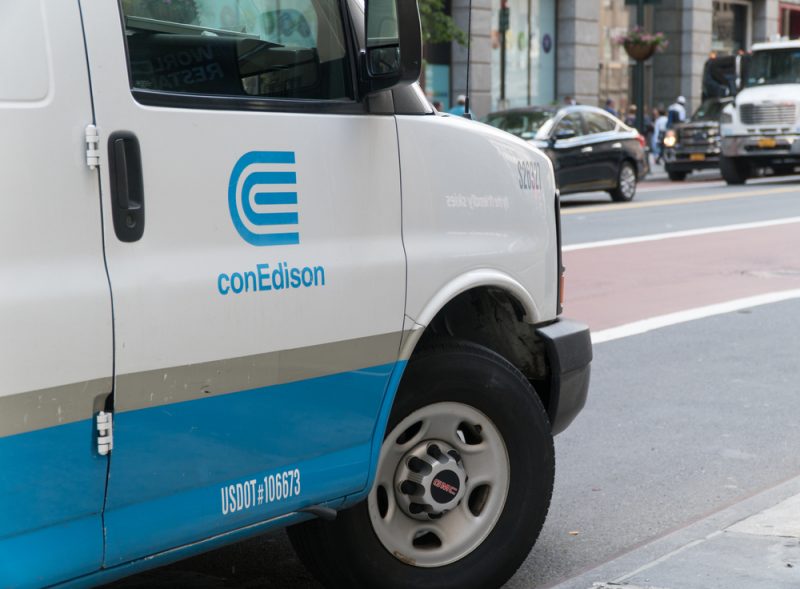Con Edison makes investment in clean energy

New York-based energy company Consolidated Edison will continue to expand its footprint in clean energy, with plans to invest $1.25 billion in renewable energy production facilities over the next three years.
The company – which provides energy for New York City, Westchester, Orange, and Rockland Counties, as well as Northern New Jersey – has been at the forefront of the renewable energy trend. Overall, it has invested $3 billion in large-scale solar and wind projects in recent years, Robert Hoglund, chief financial officer at Con Edison, said at the Wolfe Research Utilities and Power Leaders Conference, held in New York City this week.
“These projects are quickly growing in scale,” Hoglund said during a panel called Transmission and Renewable Strategies, which also featured Phil Lembo, CFO and Treasurer at Eversource, and Bob Frenzel, CFO at Xcel Energy.
Con Edison owns a renewables portfolio of more than 1.5 gigawatts of operating capacity, with 75 percent of that in solar energy, Hoglund said. It is the fifth largest owner of solar production in North America, he added.
Currently, clean energy accounts for about 8 percent of the company’s earnings. To date, the company’s solar and wind projects have been produced under budget and delivered higher than expected financial returns, Hoglund explained. Through the New York Public Service Commission’s Reforming the Energy Vision, or REV, initiative – which has set a goal of having 50 percent renewable electricity throughout the state by 2030 – Con Edison sees future growth potential in clean energy.
“For REV and its principles to work, we can’t just be an energy delivery company. We have to be a trusted energy advisor to customers and remain at the forefront of green initiatives, not just in New York but across the country,” Hoglund said.
To that end, Con Edison is also working on developing new ways to manage an electricity delivery network that increasingly will feature two-way flows of electricity and data between customers and the grid operator. The two-way model allows customers to produce their own renewable energy and have that excess energy safely and reliably directed into the system. “For customers, this means heightened awareness of their energy usage and more tools to manage it,” Hoglund said.
On the electricity transmission side, the state’s goal of supplying 50 percent of the electricity with renewables by 2030 will create opportunities for Con Edison to work with neighboring states to bring renewable electricity to the region, Hoglund said. “We are well positioned to compete for these opportunities,” he said.
For example, Con Edison is partnering with Maine Power Express to bid on the Massachusetts Clean Energy request for proposals to bring clean energy to Boston. Maine Power Express and Con Edison propose to build a transmission line from Maine to Boston using an existing energy corridor to bring wind power from Aroostook and Penobscot counties in Northern Maine to the Boston area. Hoglund said it illustrates the type of opportunities that Con Edison will pursue for its transmission business going forward.
Also, the demand for natural gas continues to increase through oil to gas conversions, fuel switching, and the need to back up intermittent renewable production. Hoglund said. Con Edison’s transmission strategy is to position itself to meet those growing demands.
Among its projects, the company is part of a joint venture to build a 303-mile natural gas pipeline from West Virginia to Southern Virginia. The Mountain Valley Pipeline is in the final stages of federal approvals.
“We’re among the largest utilities in the country and we serve a growing customer base that will provide us with unique opportunities for our business segments,” Hoglund concluded.
